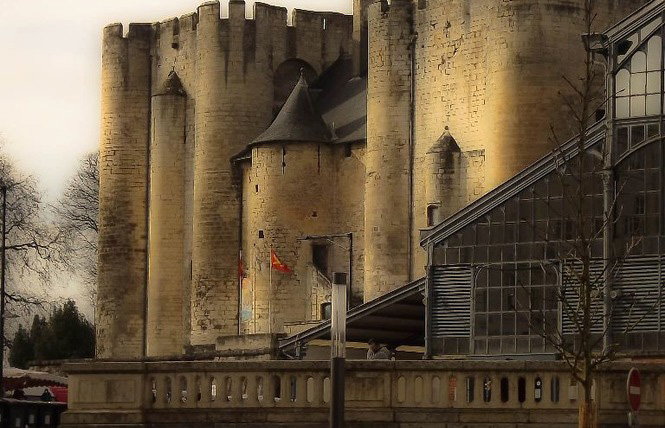
On the banks of the Sèvre Niortaise, stands one of France's most beautiful groups of twin Romanesque keeps.
Classified as a historic monument in 1840, the Donjon de Niort is the first of its kind in Niort, and is of exceptional importance for the history of military construction in the Middle Ages.
A little history...
Initially, it was a vast quadrilateral castle, 700m long and armed with a dozen towers.
At the end of the 12th century, Henry II Plantagenet, King of England, decided to rebuild the Château de Niort as an impregnable fortress, in order to develop and defend the estates that his wife, Eleanor of Aquitaine, had given him through her marriage.
It was built on the site of a Merovingian castle, burnt down by the Normans.
"The two keeps are square; the southern one measures 13.50 m. on a side, the northern one 15 m. x 14 m; they are respectively 28 m. and 23 m. high.
Their layout is similar: a solid cylindrical tower 5 m in diameter encloses each corner, and a hemi-cylindrical central buttress consolidates the walls. The southern keep, built in the 12th century, is the taller of the two (28 m.). It is a typical example of the military architecture of the period.
At the beginning of the 13th century, the burghers of Niort were besieged by the surrounding Poitevin lords (Lusignan, Parthenay), who blocked the town and the passage of goods. The blockade lasted several years, and Niort was threatened by famine. The castle, which had its own supply routes, became the town's only supply point. It was also linked to Fort Foucault by a wooden bridge, and probably also to the fortified mills built on the islets in the middle of the Sèvre.
In the second half of the 13th century, to make the Donjon a more comfortable place to live, the open space between the two towers was covered and a large central hall was built.
It gradually lost its military aspect. After withstanding many attacks and sieges, it came very close to being destroyed. One morning in 1749, the north tower collapsed, shaking the rest of the building. The Keep was finally restored in 1751. The three magnificent diamond vaults on the first floor (now known as the lower rooms), models of architecture and stereotomy, date from this period.
From the 18th century onwards, the Donjon was used as a prison. Crews of English sailors whose ships had been seized were sent there. Restoration work began in 1820, at the same time as the dismantling of the castle and ramparts surrounding the town. Classified as a historic monument in 1840, the Donjon was inhabited by families of city employees or used to house the departmental archives.
In 1870, the Département handed over ownership of the Donjon to the town, but it continued to be occupied until the early 20th century.
The Donjon Museum
It was following France's first national ethnology congress, held in Niort in 1896, that the Donjon finally found its contemporary vocation. It was to house the first Poitevin costume museum.
The Musée du Donjon, which has been awarded the Musée de France label, hosts temporary exhibitions. A permanent exhibition recounts and explains the history of the town and the keep. The architectural evolution of the keep, from the 12th century to the present day, is brought to life by 3D modeling. Explanatory panels, dioramas, a film projection and a general topographical model of the medieval town bring the past to life.
Guided tours of the monument are also available. The lower hall is devoted to regional archaeology, while the upper floor of the central building features Poitevin furniture - a reconstruction of a Poitevin interior, and an insight into the daily life of a Niort family at the end of the 19th century.
Niortais family in the late 19th century.
Since June 6, 2014, the Cachot Noir has been home to the Donjon's new archaeological collections. Access to the terrace offers a vast panoramic view of the surrounding area.
Le Donjon de Niort
Rue Duguesclin,
79000 Niort
Tel.: 05 49 28 14 28
http://www.niortagglo.fr/-Donjon-






